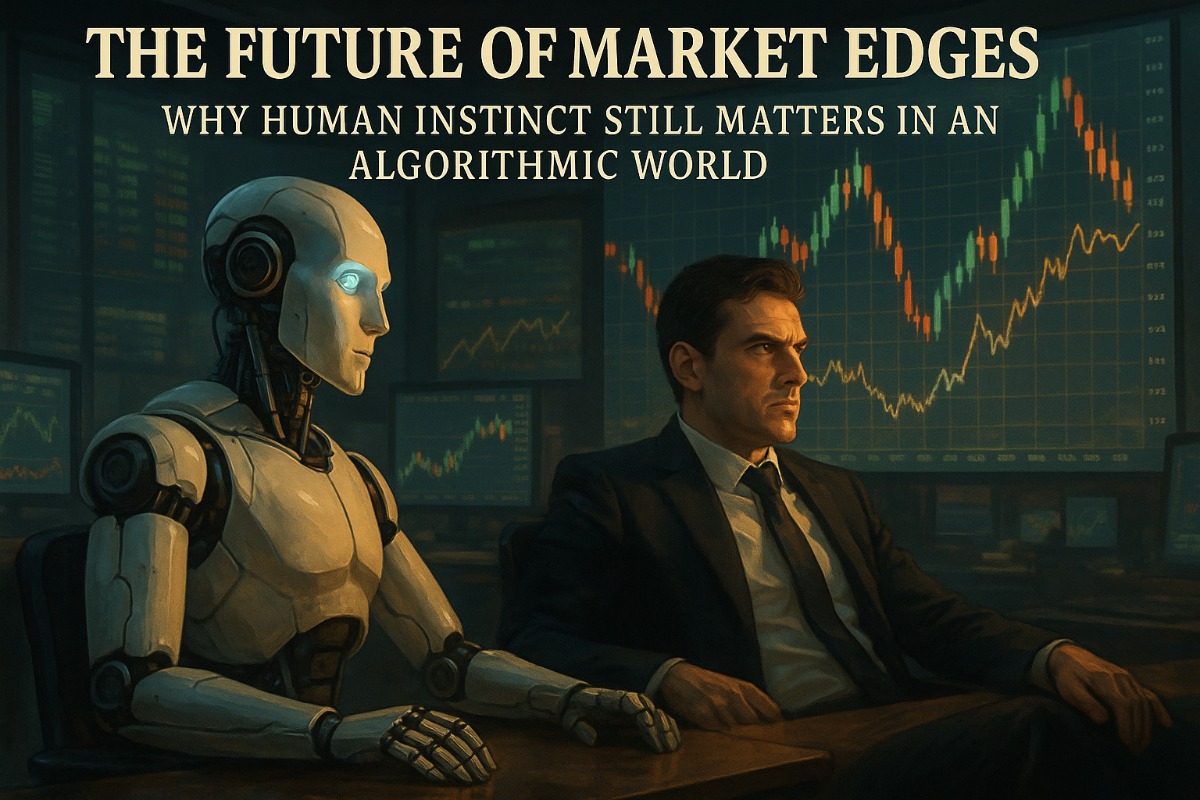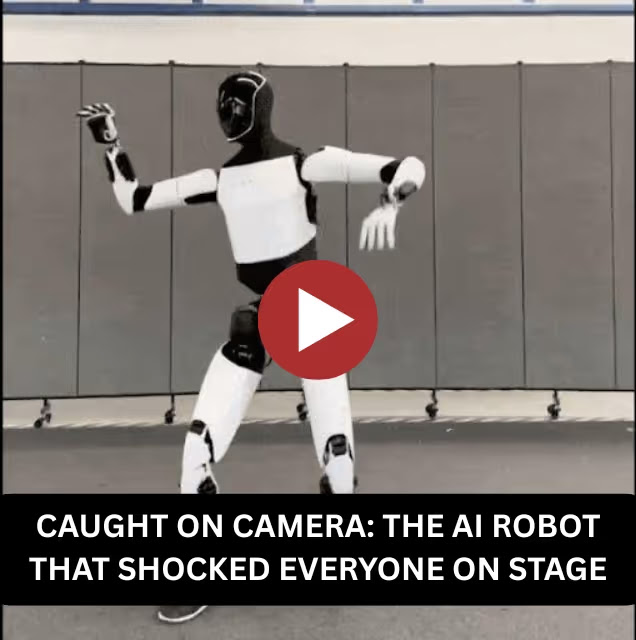The Future of Market Edges: Why Human Instinct Still Matters in an Algorithmic World
Oct 05, 2025 12:25 pm
The Future of Market Edges: Why Human Instinct Still Matters in an Algorithmic World
The Rise of Machines - and the Trader’s Dilemma
Last week, an AI robot stepped on stage and stole the show. Cameras flashed, markets buzzed, and headlines screamed about a “new era” where human intuition would finally become obsolete.
But for traders who’ve lived through every hype cycle - from dot-coms to crypto booms - this was just another signal: technology evolves fast, but emotion still drives the market.
In trading, algorithms may win milliseconds, but humans still win moments.
1. Algorithms Can Analyze - But They Don’t Anticipate
AI can scan millions of data points faster than any analyst alive. It can back-test, optimize, and even learn from its own mistakes.
What it can’t do?
Feel the room.
Markets are built on emotion - fear, greed, hesitation, overconfidence. These are not variables you can code; they’re waves that traders surf daily.
The best traders aren’t replacing instinct with AI; they’re augmenting it.
They let machines handle the noise while they listen for the signal.
Sponsored Content from Brownstone Research
Caught on Camera: The AI Robot That Shocked Everyone on Stage
At first, it danced.
Flawlessly. Effortlessly. Like it had trained for years. But it hadn’t.
It simply watched - then did.
That was Optimus, Tesla’s humanoid AI robot. Revealed by Elon Musk in front of a stunned audience.
What followed wasn’t a scripted show. It was a real-time demonstration of a machine capable of learning like a human - but adapting like no human ever could.
It stirred a pot. Vacuumed. Cleaned a table. All through observation, not programming.
The world saw entertainment. Investors saw a trillion-dollar inflection point.
Because powering this machine is a chip - and behind that chip is a company few have ever heard of.
>> Click here to discover the stock tied to the AI robot that danced its way into history
2. Trading Edges Are Becoming Psychological, Not Technical
In 2010, having a faster connection gave you an edge. In 2025, the edge is knowing when not to react.
Algorithms flood the market with short-term trades that chase volatility. But humans still have one unmatched advantage: patience.
Patience doesn’t show up on a chart.
It’s what separates traders who panic during false breakouts from those who recognize opportunity.
AI doesn’t get tired, but it also doesn’t wait.
It executes the plan; humans evolve the strategy.
3. The Real-Time Theater of Markets
What happened on that stage wasn’t just a product demo - it was a metaphor.
As the robot flawlessly explained its trading model, the audience gasped not at the technology itself, but at its confidence.
Confidence sells. Confidence moves markets.
Every rally, every crash, every meme-stock explosion starts the same way - with belief.
- The smartest investors don’t bet against technology; they bet on how people will react to it.
4. The Hybrid Era: Man and Machine Together
The future of trading isn’t human or machine. It’s both.
Imagine pairing your emotional intelligence with AI’s raw processing power.
You focus on the narrative - the why - while your algorithm handles the when.
Here’s what modern traders are already doing:
- Machine-driven signals: let the bot scan setups 24/7.
- Human validation: filter results through experience and context.
- Behavioral overlays: track sentiment, tone, and macro trends that machines can’t “feel.”
That’s not competition - that’s evolution.
5. Why the Smartest Traders Still Lose to Themselves
Here’s the irony: with all our technology, most trading losses still come down to the same human flaws - overtrading, revenge trading, emotional bias.
AI can’t stop you from hitting “buy” out of frustration.
Only discipline can.
So the trader’s challenge in 2025 isn’t about finding the right model - it’s about building the right mindset.
Because when markets shake, code follows logic, but humans follow stories.
6. Stories Still Move Markets
The stage event proved one thing - spectacle drives speculation.
The robot’s performance didn’t just show AI’s potential; it created narrative momentum.
In every major market shift, narrative is the first mover.
Bitcoin wasn’t valuable until people believed it was the future of money.
AI stocks didn’t surge because of balance sheets - they surged because people believed “this changes everything.”
AI might be fast, but it still trades in the shadow of human emotion.
7. Adapting Without Losing the Edge
If you’re a trader in 2025, the key isn’t to outsmart the machines - it’s to understand them and stay human where it counts.
- Use AI to identify trends - not to justify FOMO.
- Let automation handle mechanics - not conviction.
- Protect your human advantage: judgment, creativity, and intuition.
- Because when everyone else trades on autopilot, your ability to see what’s unquantifiable becomes priceless.
8. The Takeaway: The Future Needs Both Hands on the Wheel
Markets will always have algorithms chasing signals, but someone still has to decide what matters.
That’s where traders earn their keep - not in speed, but in clarity.
Technology doesn’t eliminate the human edge; it amplifies it.
The question is: will you let it?
Closing Thought
Every revolution begins with awe - and ends with adaptation.
That robot may have stolen the spotlight, but traders who blend instinct with intelligence will steal the profits.
After all, machines can predict patterns.
But only humans can predict themselves.

